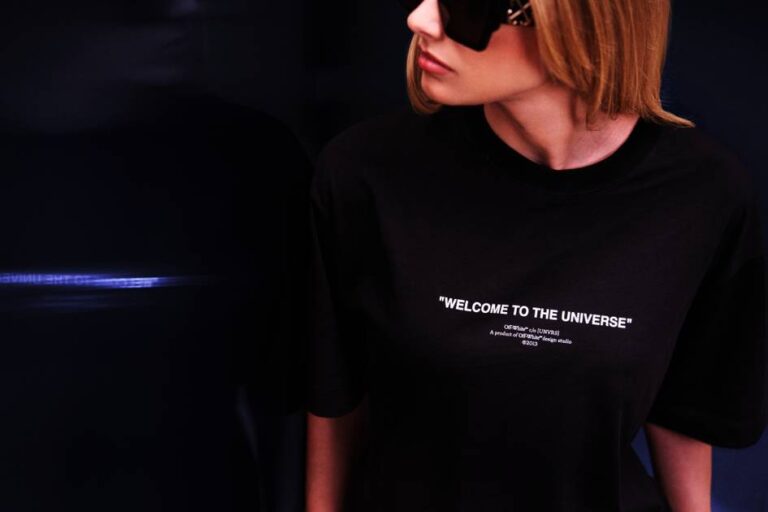Fashion Tech: The Innovative Ally in the Fight Against Climate Change

High fashion has often been associated with aesthetic pleasure rather than urgent environmental issues. However, with soaring global temperatures, our clothing choices are evolving into matters of necessity. Approximately 3.6 billion individuals inhabit areas particularly susceptible to climate change, and from 2000 to 2019, an estimated 480,000 people lost their lives each year due to heat-related incidents. In a reality where heat waves are intensifying and becoming more prevalent, the imperative for innovation in personal cooling technologies is more urgent than ever before.
Transforming Clothing into Climate Solutions
This backdrop sets the stage for an innovative movement in Hong Kong. Researchers at The Hong Kong Polytechnic University (PolyU), spearheaded by Prof. Dahua Shou from the School of Fashion and Textiles, are working on pioneering intelligent, sustainable personal cooling solutions. Shou’s latest research, detailed in *Science*, presents a groundbreaking concept that merges advanced textiles, AI-enhanced wearables, and thermodynamic principles to create garments that actively respond to a wearer’s physiological needs.
From Concept to Closet: The Aesthetic and Ethical Issues
In contrast to the passive “cooling fabrics” typically found on the market today, which mainly manage moisture or reflect sunlight, Shou’s designs view garments as dynamic systems. His team incorporates the fundamental mechanisms of cooling—radiation, conduction, convection, and evaporation—within a closed-loop, AI-supported framework. This translates to embedded sensors in the fabric that monitor real-time physiological data, allowing algorithms to forecast when the wearer may overheat and adjust cooling levels accordingly.
These ideas may seem like a glimpse into the future, yet prototypes are already in existence. For instance, the iActive™ sportswear line utilizes low-voltage “artificial sweat glands” paired with a unique liquid network designed to optimize sweat release, achieving rates of perspiration expulsion three times faster than natural human processes. Similarly, OmniCoolDry™, another innovation from this team, is a fabric that not only reflects solar and ground radiation but effectively emits mid-infrared body heat. This allows it to lower skin temperature by roughly 5°C compared to regular textiles. Lastly, SweatMD is a fabric with integrated microfluidics that channels sweat while collecting crucial biomarker data to provide insights into health conditions like fatigue or dehydration.
What’s particularly impressive about these advancements is their seamless integration of functionality and aesthetic appeal. Traditionally, intelligent fashion has been perceived as bulky or overly technological, laden with wires and batteries. However, Shou’s vision points toward a more promising future: lightweight, washable, and durable clothing items that resemble conventional garments rather than high-tech gadgets. These can comfortably fit into normal settings such as gyms, workplaces, or even standard fashion collections.

From a sustainability standpoint, the potential impact is remarkable. Air conditioning currently represents roughly 10 percent of global electricity usage, and demand is predicted to triple by 2050. Effective personal cooling could lessen the reliance on centralized climate control systems, particularly in developing areas with limited energy resources. Shou’s designs utilize recyclable materials and energy-harvesting technologies, such as flexible solar cells, to provide active cooling with minimal grid dependency.
Admittedly, challenges remain. Managing sweat effectively proves to be a major hurdle: excessive perspiration can saturate fabrics, hampering their effectiveness. The implementation of real-time adaptive thermoregulation is complex when considering varying body types and climates. Additionally, standardized metrics for cooling efficiency are still absent, making product comparisons and consumer education difficult. Crucially, any widespread success in this sector will necessitate collaboration across various fields, including textiles, electronics, and artificial intelligence.
Still, the initiatives at PolyU present a roadmap for the evolution of the fashion-tech industry. By marrying user-centered design with scalable production, intelligent wearables could transition from luxury items to essential tools, broadening our abilities to function, travel, and thrive in hotter environments. Fashion’s legacy has always been about adaptation to contemporary challenges. In an era marked by extreme heat, the response transcends seasonal trends; it becomes a matter of existence.

Would you consider incorporating these cutting-edge personal cooling technologies into your wardrobe?





